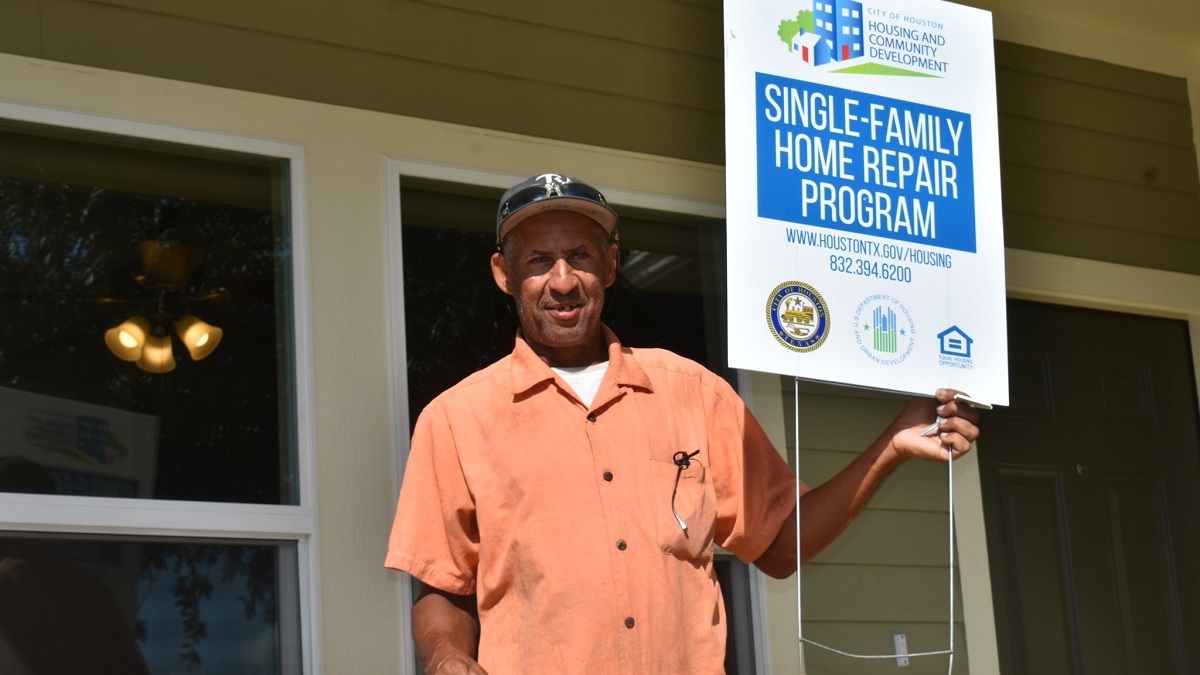Every year 100 Houston homeowners are assisted by the city's Housing and Community Development Department’s single-family home repair program.
It evaluates damaged homes and helps residents make repairs needed to protect a homeowner’s life, health and safety.
“The program gives consideration to seniors over 62, families with children under 18, and people with disabilities. In cases where homes are severely damaged, the program will reconstruct brand-new homes for homeowners,” according to the HCDD website.
Jean Gould, the department spokeswoman, said the city has operated a variety of home repair programs.
“Currently active include a program for regular wear-and-weather damages overseen by guidelines that launched in 2017, as well as a program for those whose homes were damaged in the 2015 floods that hit Houston, which launched in late 2018,” Gould told Houston Daily. “The goal is to repair the homes of low- and moderate-income Houstonians who have been living in substandard conditions, with a focus on those who are seniors, who are disabled or who have young children.”
Funds come from federal sources like Community Development Block Grants (CDBG) and local funding like city bonds and Tax Incremental Reinvestment Zone (TIRZ) funding.
Applicants are asked a series of questions to see if they qualify for the program.
Do they own the home?
Is the home their primary residence?
Are property taxes current or on an approved payment plan?
Is their income at or below 80% of area median income?
Is the home outside the floodway?
If they qualify, they can be eligible for $20,000 for minor repairs and up to $80,000 for the reconstruction of their home. The program pays for roofing, plumbing, HVAC, electrical, siding/trim, windows and doors, as well as abating any risk to health or life. If a home is determined to be too far gone, it is torn down and a replacement is constructed “with new, economy-grade finishes.”
The homes are examined by city inspectors to determine how much needs to be repaired and estimate what the cost will be. That will be used to determine the length of the affordability period or how long a homeowner is required to stay in the home once work is completed. That period can run from five to 20 years, depending on the amount of work performed.
If homeowners sell or rent the home, they are asked to pay for a portion of the repairs.
Money comes from a variety of sources, Gould said. The disaster recovery option for the 2015 flooding events included $12 million from the federal government, allocated through the U.S. Department of Housing and Urban Development, she said.
“Our non-disaster recovery program is expected to allocate about $5.5 million of federal CDBG funding,” Gould said. “This amount changes from year-to-year depending on available funds at the local and federal level."
She said that means the program is flexible – “our goalposts are always moving due to the changing amount of funding available.”
Gould said, however, that the overall goal doesn’t change.
“Our purpose as a department is to help residents have good homes that they can afford in communities where they can thrive,” she said. “In part, this means assisting low- and moderate-income homeowners whose homes have been damaged over time, especially following the unexpected flooding events that have hit Houston over the last decade.”

